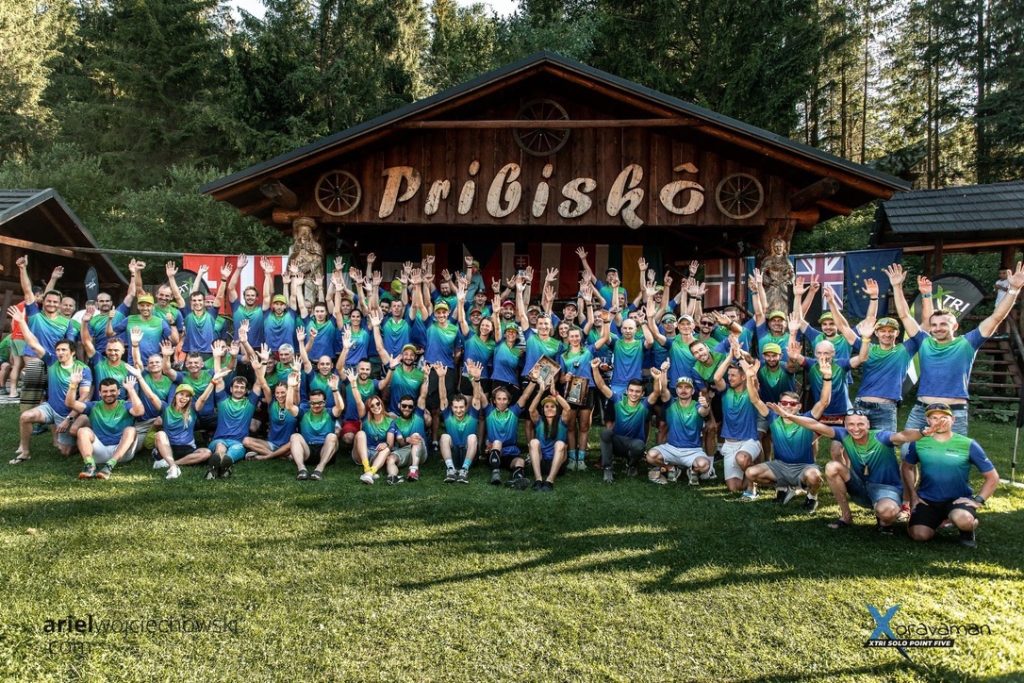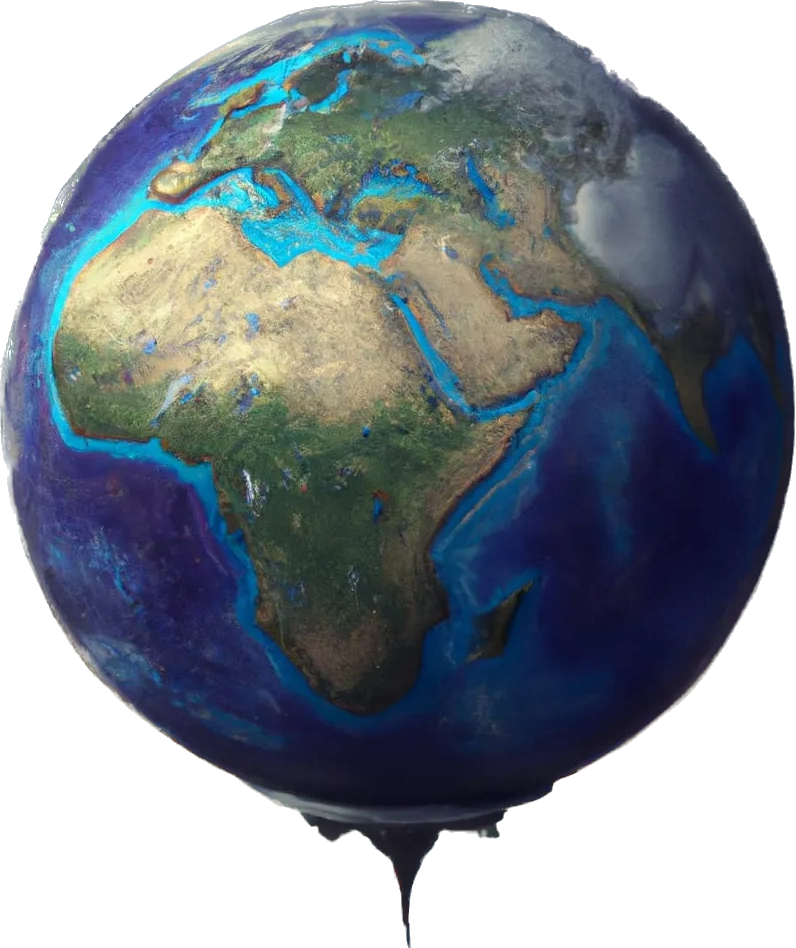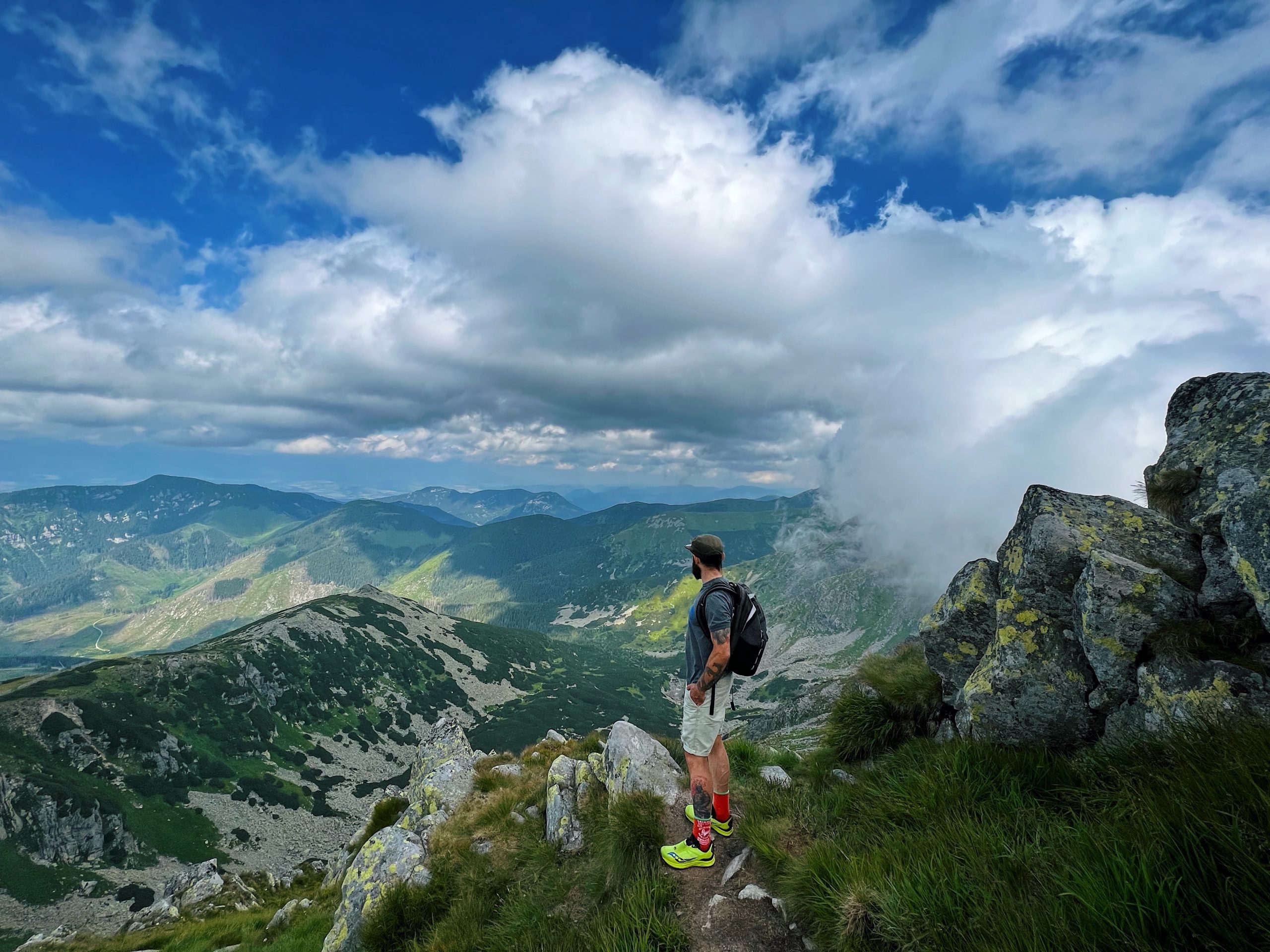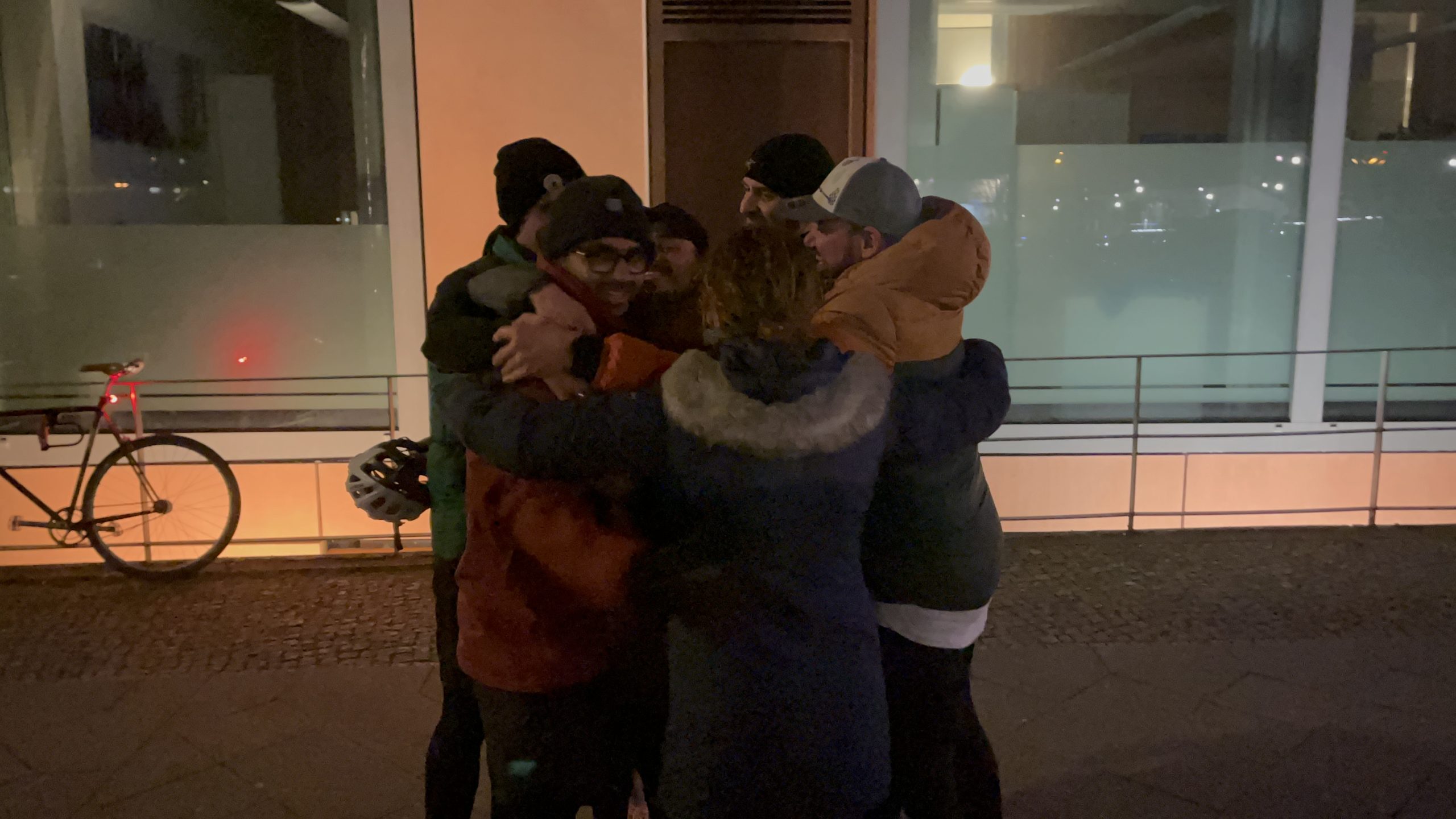8am, I’m standing on the shore of a mountain lake again, dressed in a wetsuit and swimming cap. XTRI again, mountains, suffering again. The Oravaman XTRI or Solo Point Five differs from previous extreme triathlons in that it is half the distance of an Ironman and the participants do not have a support team. No one follows you in the car, runs with you in the mountains, or gives you food when you are having a hard time. You are on your own.
One week before the competition
Since we currently live in Berlin and are training for a triathlon in the mountains, on completely flat terrain, I thought it would be a good idea to go to the start line a week before the competition. Actually, it turned out to be quite right, despite not taking a holiday, so I had to work during the day and train in the evening. And, in fact, after two days of such a schedule, I realized that I just couldn’t miss such beauty around me and took a day off on Wednesday.
But, let’s not get ahead of ourselves, so a week before the start, on the first day we decided to go and scout the bike route. We get ready, put on our nice Ukrainian jerseys, download the routes, and set off and I realize that my left foot is not fixing well in the pedal. I unbuckle and re-buckle, but the result is the same. WTF? I stop and look at the clit – the front part is broken off. I guess why this could have happened (a week ago I performed emergency braking using not only the bike brakes but also my foot), cursed myself for not taking spare clits and continue on. What can I do, I can’t waste a day.
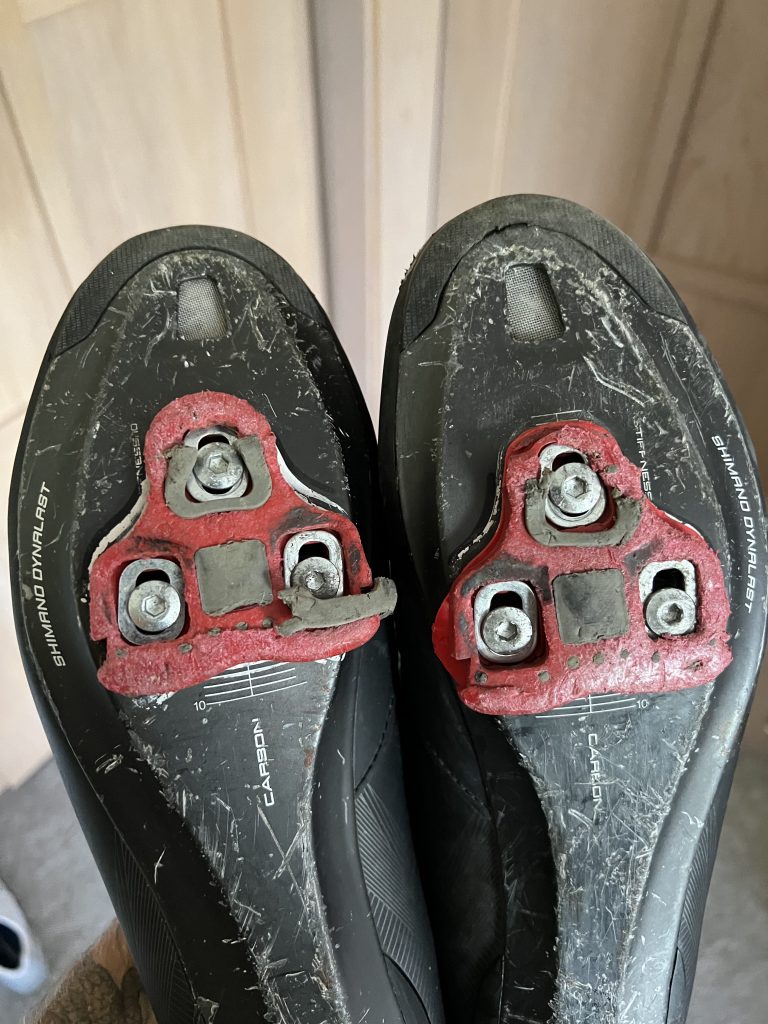
The track is cool, there are long climbs and steep downhills that you can pour out on the bed at 60+. The coach said that I should do an easy ride, but I understand that some uphills are difficult to ride easily, simply because even in the easiest gear I’m spinning somewhere around FTP.
We passed one part of the track and went to see the lake where the swimming stage would take place. The lake looks like a typical city beach, just with mountains in the background. We looked at the lake, stopped for lunch (almost Carpathian cuisine, prices are about Bukovelian), and went home.
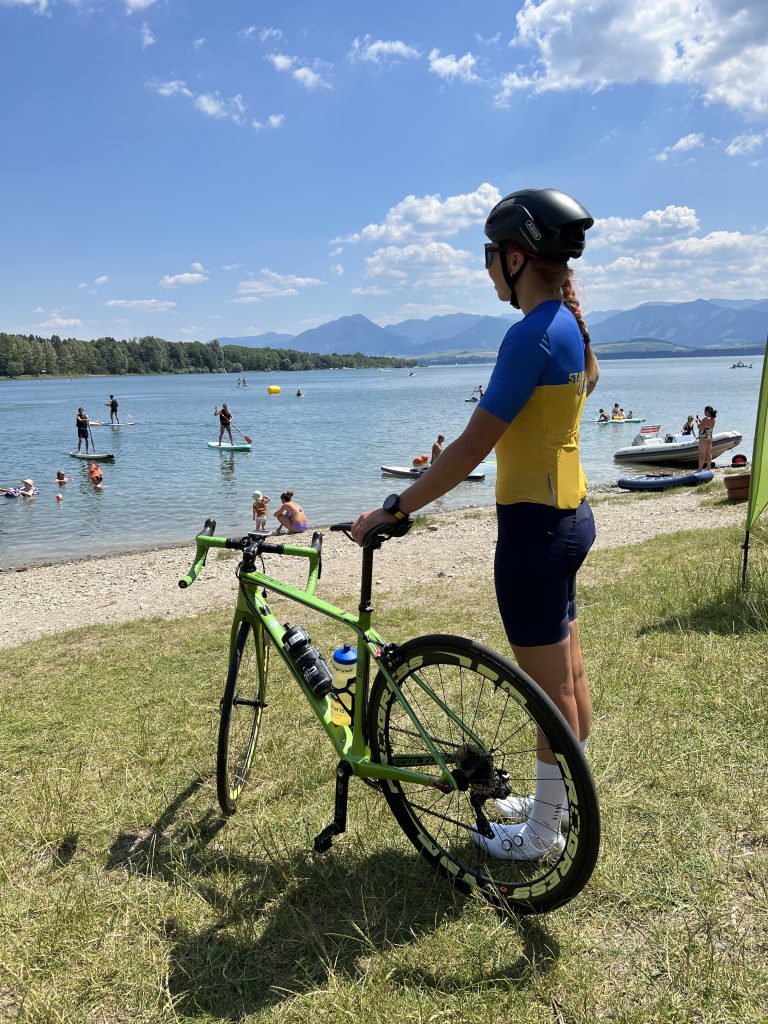
A few words about our accommodation. It was one of the best accommodations we have stayed in. Convenient location, kitchen in the room and a common kitchen downstairs where you can also cook, TVs with airplay everywhere so you can spend your evenings like at home. And most importantly, the super friendly hosts who allowed us to check in at night (they thought of everything with the key handover), helped us with everything we needed, let us into the SPA complex to take a shower after the race (we didn’t stay overnight after the competition) and even made us coffee on their sun terrace to give us a little rest and recharge our batteries after the competition. I will 100% go back to Apartmány Roháče and recommend this apartment to anyone.
And now let’s get back to our “preview” of the start.
Our little hack
As I wrote above, I took Wednesday off and we decided to explore the surroundings and do a small 20km hike with a thousand meters of climbing. We decided to start our day with a swim in the lake where the race would be held. Nothing interesting, except that after the swim we finally unpacked the Jet Boil and made ourselves some coffee, accompanied by an apple-poppy cherry strudel, of which we ate 6 pieces in 6 days.
After the swim, we set off to see the Demänovská ľadová jaskyňa, which is one of the largest ice caves in Slovakia. Of course, only a part of it is open to visitors, and you can only get there with a guided tour in Slovak, but it’s a very interesting experience. The only thing I hadn’t thought through was that the tour lasted 45 minutes and it was frankly fresh in shorts and a T-shirt. Also, due to global warming, there was almost no ice in the cave.
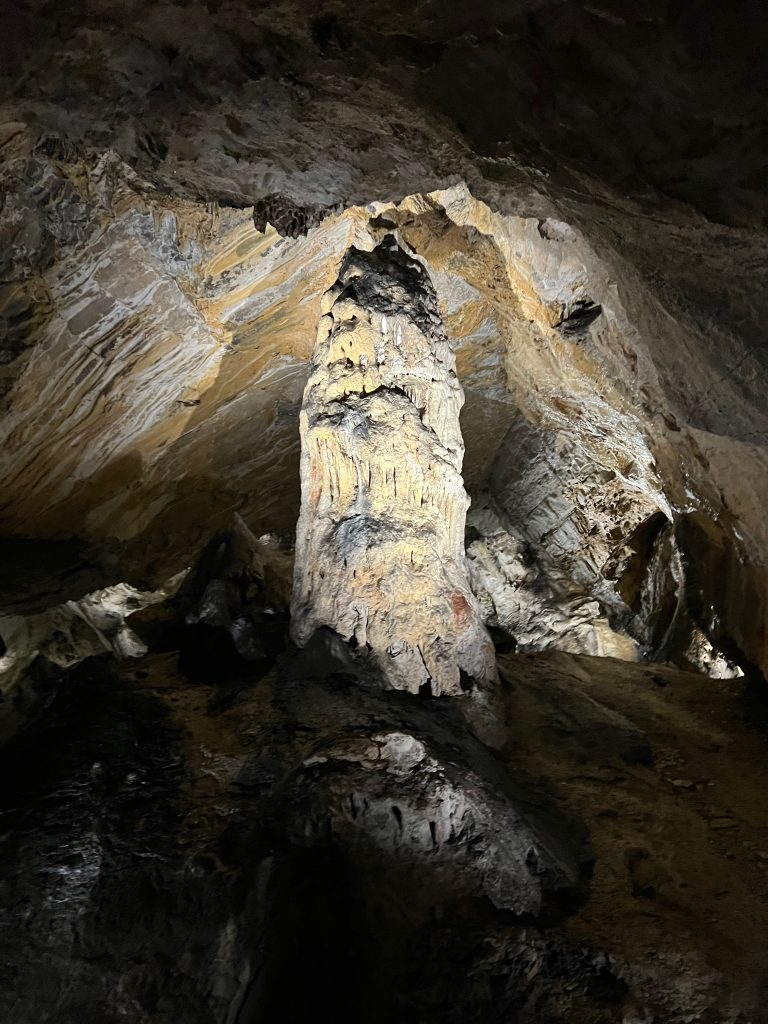
After the cave, we headed to the Jasná ski resort to have lunch and make our little hike to Mount Chopok. It was too late to do the full 20 kilometres, so we decided to start the hike with a short cut. It turned out that in about 4.5 kilometres we gained 1 kilometre of altitude. I started to get a little nervous, because the course on Oravaman was a little easier, but not by much.
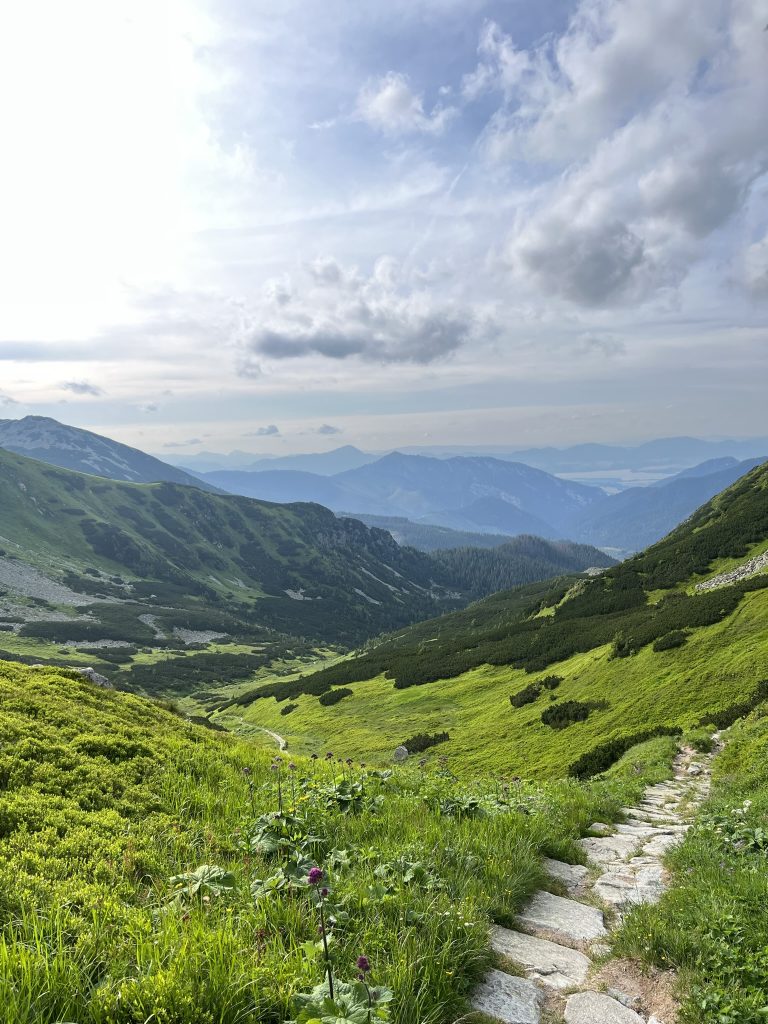
In any case, the hike was great. We remembered what mountains are like, how you feel at 2000 meters, and also saw some breathtaking scenery.
Oravaman Solo Point Five
Let’s get back to the competition itself. Since the competition does not provide for a support team, the athletes had to make some preparations, namely, to hand over their bikes to the transit near the lake, and then go to the starting town and hand over their running backpack with at least 1 litre of water, 1 gel or snack, a headband and a jacket. No one checked the mandatory equipment, but they warned me that they might check it on the course. All items had to be placed in a huge, thick garbage bag and tied in a knot.
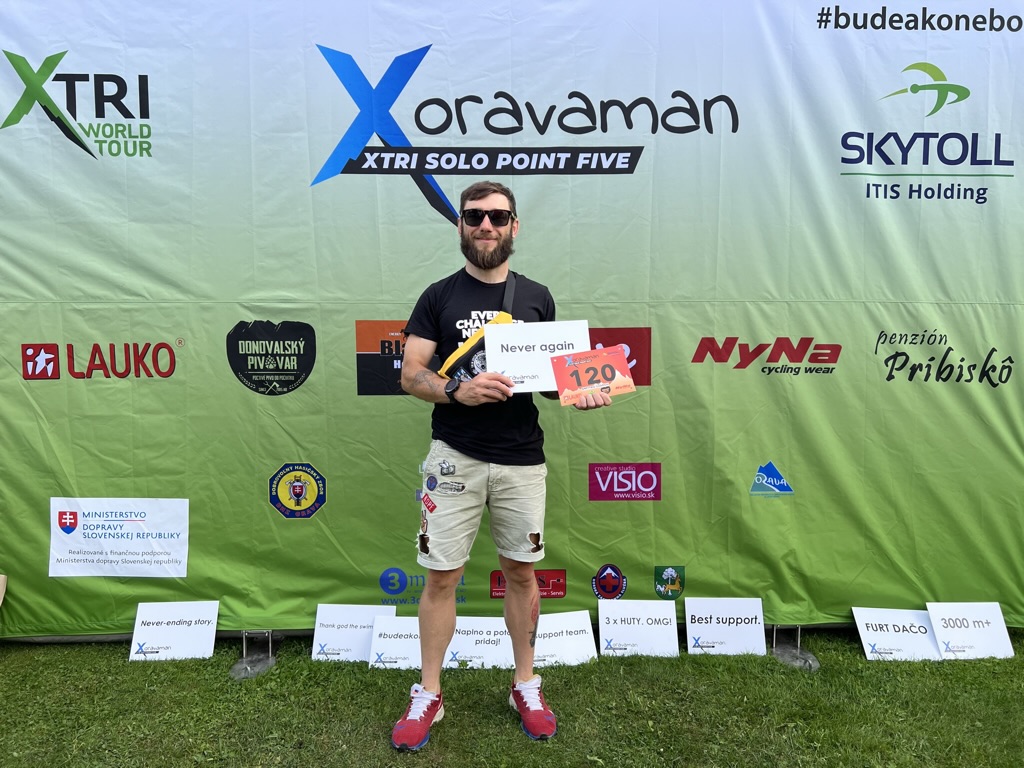
On the day of the competition, 2 hours before the start, everyone got on buses in the start-finish town and we were taken to the lake. There were some people sitting in front of us who were discussing their upcoming competitions, then they got to the fact that this year’s Oravaman had very strong participants, including a girl from Ukraine who had won the Blacklake XTRI and was on a Norseman. As we were later told, Nastya and I are quite famous in the XTRI world thanks to this video – BLACKLAKE – The Supporters.
The atmosphere in the first transit is relaxed. Everyone is preparing for the start, checking their bikes, putting on wetsuits. Someone even sits smoking a cigarette by the fence (in transit).
We put on our wetsuits, I tested the water, and Nastya decided that she didn’t need it.
3.2.1. Старт.
People start punching the water. I get hit in the head a couple of times, I kick someone myself, but pretty soon we stretch into a line and I try not to fall off someone’s legs. I couldn’t resist, swam alone, caught another group, and swam a lap and a half with them.
I run out of the water and run to my bike. I pull off my wetsuit and throw it into a plastic bag. My goggles and hat go in the same bag. I tie it all up in a knot, put on my cycling clothes, and see that I forgot to put my shoe bag in the plastic bag. For good luck, I stuck it right into the knot of the plastic bag (so it wasn’t lost) and started riding.
The task was to win back on the bike everything I lost in swimming in order to get into the top ten in running. My hopes were dashed in about 10 minutes when I was passed by my first rival on the TT, and then, about 30 minutes later, by another. No one else overtook me on the bike.
I went up the first mountain and then caught up with Nastia on the downhill. After the main mountain, which we had to ride 2 times (at the beginning and at the end), I raced to two smaller mountains, after which there was a turn. Everything was going very well until I saw the race leader on the way up the last mountain before the turnaround. The gap between us was huge. I started counting all the cyclists I met, and by the time I got to the turnaround, I had counted 35 competitors. Well, I had to work harder.
He ate a few more competitors and on the last downhill before the big mountain, he met the leader again. The gap had clearly widened. This time, I didn’t count my competitors, it was clear that I wouldn’t be in the prize zone, so I just had to work.
The last climb and then to the finish of the stage. My goal was to close the bike in 3 hours and I almost did it and my result was 3:05. I finished the bike with the 16th result and in 21st position, thus gaining 39 positions after the swim.
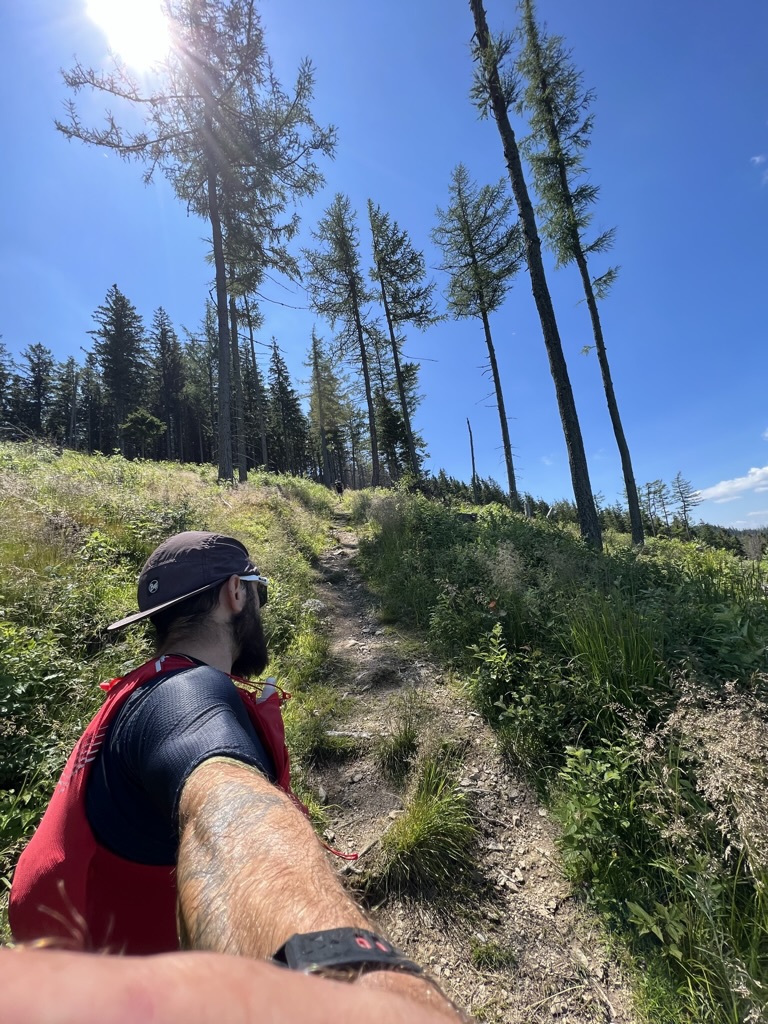
Running leg is not about running
And then the problems started. The bag that the volunteers handed me was somehow wet, and when I ran away from the starting point, I saw that one of the flasks was empty. I was down to half a liter of water on a super hot day.
I was still running smoothly, but at some point, I realized that I just couldn’t run any further because I started to climb hard. In an hour and a half, I gained more than 1,100 meters of climbing, drank almost all the water, and was exhausted. All my hopes were for the descent, which turned out to be quite technical and I couldn’t run there. Although, there were athletes who overtook me on this particular descent.
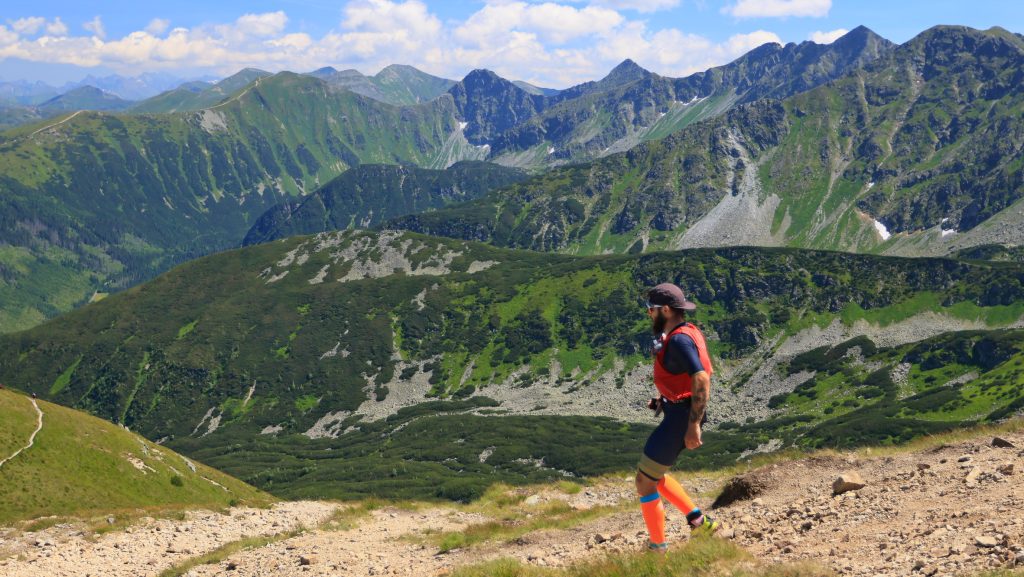
At some point on the way down, I saw a spring and decided that even if the water was bad, I would probably get diarrhea after the finish, so I took some water and felt a little better. After a while, I went down to the food station with another athlete, where we were met by kind volunteers who filled our water flasks and insisted on offering us beer. I was also very sick from the heat and dehydration, so I couldn’t even tell them that I didn’t understand them.
But in about 20 minutes, after I drank about half of the water I had collected from the volunteers, I felt better and even ran at a fairly decent pace.
On another climb, I lost ground to a long-legged athlete who had been running behind me for 5 kilometers. And I say “long-legged” because when we switched to a step on the next climb, his step was much longer than mine, so he left me on foot.
I descended, ran to the arch and there it was – the finish line! 32nd position and a glass of cool, delicious beer were already waiting for me.
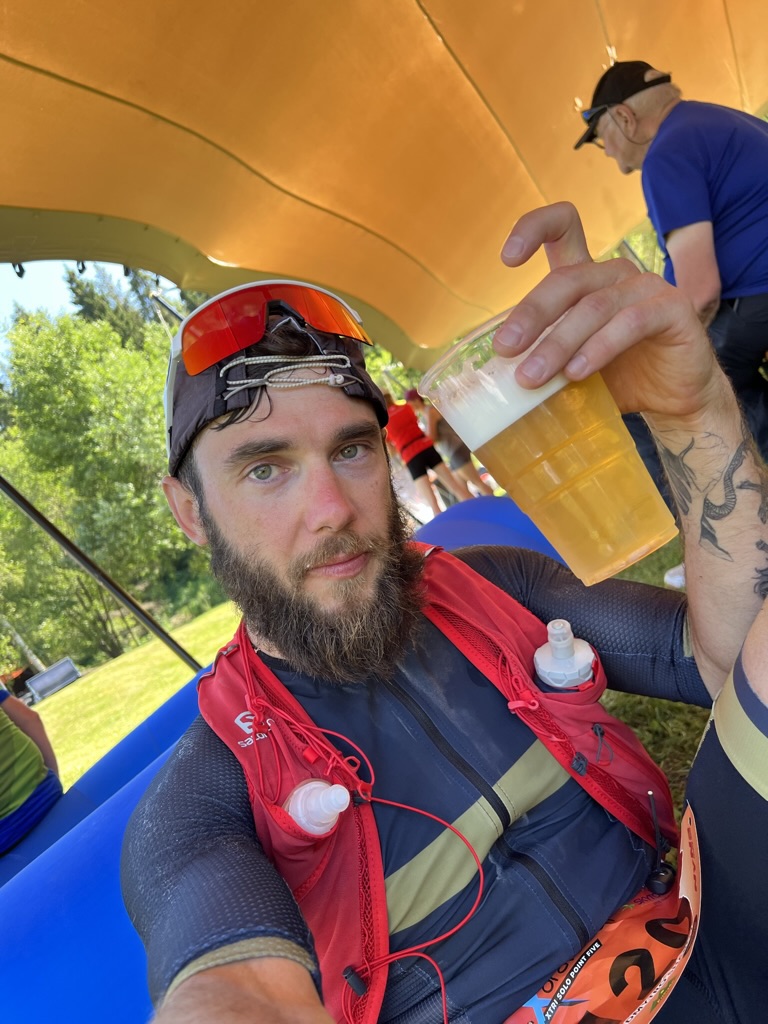
After the finish
We just had to wait for Nastia and then we could go to the owners of the apartment where we had lived before to get cleaned up for the award ceremony. We also had to eat lunch, which was included in the finisher’s package (very tasty, especially with beer).
The award ceremony was long, but fun, plus Nastya won the absolute top spot, so she even received a cash prize.
Then we had an hour’s drive to get to Berlin, and Nastia and I split it about 50/50 into 4 shifts.
In conclusion, I can say that I really enjoyed this competition and I’m even thinking of coming here next year.
